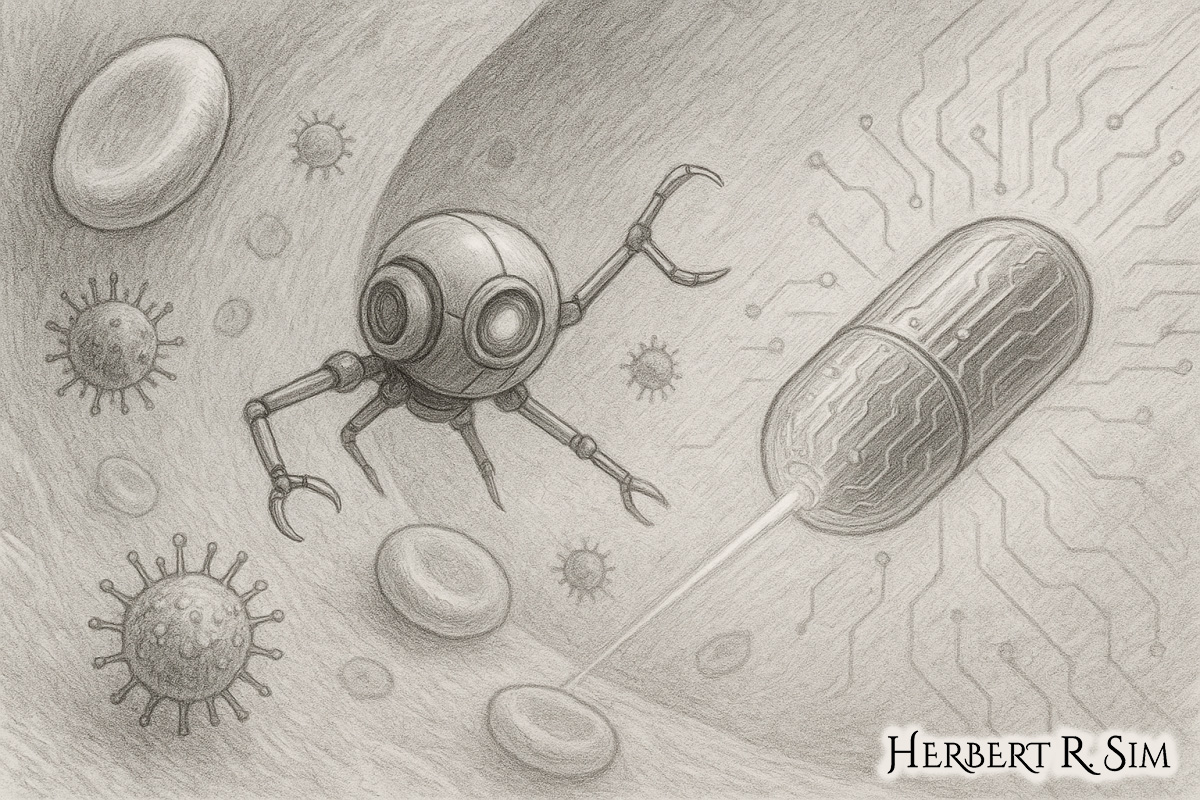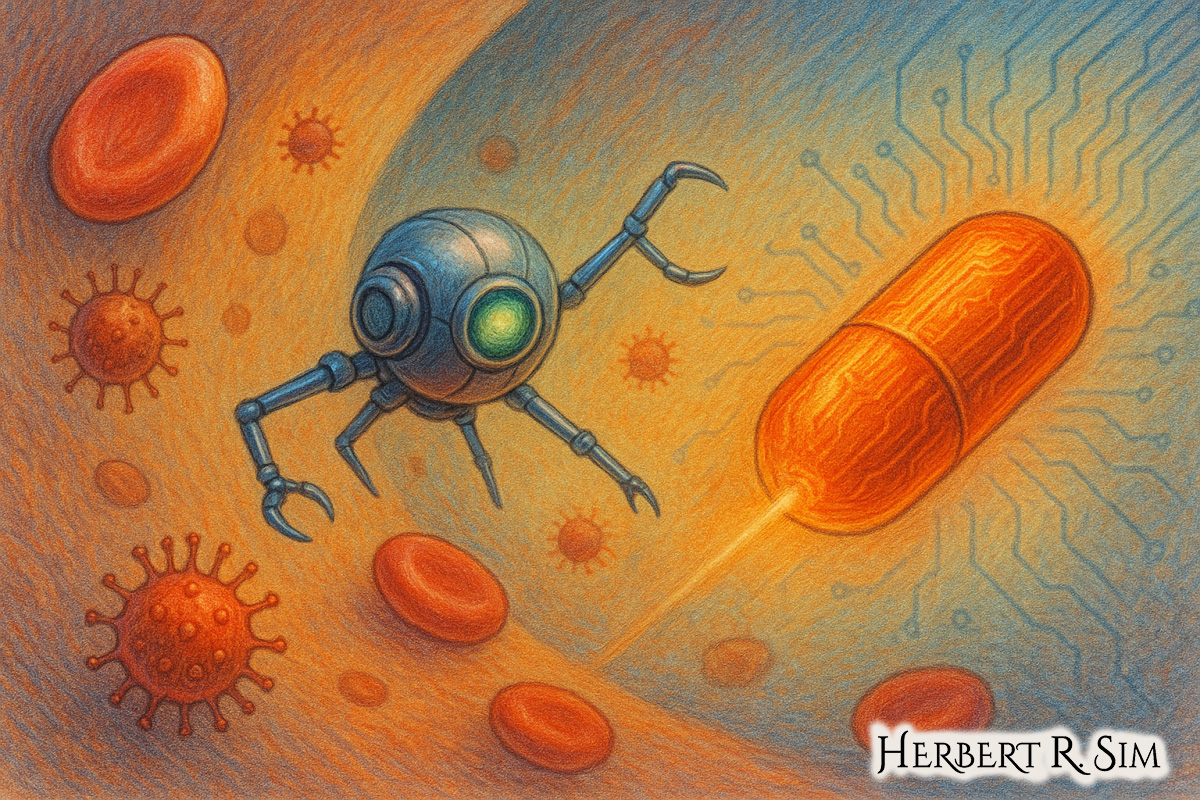
Inspired by the Ant-Man movie in theatres right now, I researched and put together an article about Nanotechnology.
Nanotechnology is the science and engineering of manipulating matter at the scale of atoms and molecules—typically between 1 and 100 nanometers in size. To put that in perspective, a human hair is about 80,000 to 100,000 nanometers wide. At this scale, materials can exhibit extraordinary properties—greater strength, lighter weight, increased chemical reactivity, or enhanced electrical conductivity.
Since its emergence as a recognized field in the late 20th century, nanotechnology has transformed industries from medicine to energy, and it continues to be a key driver of innovation in the 21st century.
A Brief History
- 1959 – Physicist Richard Feynman gave his famous lecture “There’s Plenty of Room at the Bottom”, envisioning the possibility of manipulating individual atoms.
- 1981 – The invention of the scanning tunneling microscope (STM) allowed scientists to visualize and move atoms for the first time.
- 1985 – Discovery of fullerenes (soccer-ball-shaped carbon molecules) expanded possibilities for nanomaterials.
- 1990s onward – Advances in semiconductor manufacturing, materials science, and biotechnology fueled a nanotech revolution.
Core Areas of Nanotechnology
- Includes nanoparticles, nanotubes, nanowires, and quantum dots.
- Example: Carbon nanotubes, which are stronger than steel yet lighter than aluminum.
- Applications: Stronger materials, lightweight structures, targeted drug delivery, conductive inks.
- Developing smaller, faster, and more energy-efficient devices.
- Example: Transistors just a few nanometers wide in modern computer chips.
- Applications: Smaller and faster processors, memory storage devices, flexible electronics.
3) Nanomedicine | Nanobiotechnology
- Using nanoparticles for targeted drug delivery, imaging, and regenerative medicine.
- Example: Lipid nanoparticles used in vaccines.
4) Nanofabrication | Nanolithography
- Building devices and structures atom-by-atom or molecule-by-molecule.
- Example: Nanoscale sensors for environmental monitoring.
- Applications: Semiconductor manufacturing, photonic crystals, nanosensors.
5) Nanosensors & Nano-instrumentation
- Focus: Devices that detect and measure changes at the nanoscale.
- Examples: Chemical nanosensors, DNA-based sensors, atomic force microscopy (AFM) probes.
- Applications: Environmental monitoring, food safety, medical diagnostics.
6) Computational Nanotechnology
- Focus: Modeling, simulation, and design of nanoscale systems using computational methods.
- Examples: Molecular dynamics simulations, quantum mechanical modeling.
- Applications: Predicting nanomaterial properties before physical synthesis, optimizing nanoscale designs.
6) Nanomanufacturing
- Focus:
-
Scalable production of nanoscale materials, devices, and systems.
-
Ensuring reproducibility, precision, and cost-effectiveness.
-
Integrating nanoscale components into larger functional products.
-
- Examples:
-
Large-scale production of carbon nanotubes and graphene sheets.
-
Nano-coatings for scratch-resistant, anti-reflective, or self-cleaning surfaces.
-
Nanostructured batteries and supercapacitors.
-
Printed nanoelectronics and flexible electronic circuits.
-
High-volume production of quantum dots for displays and sensors.
-
- Applications:
-
Electronics: Mass-produced nanoscale transistors, memory devices, and flexible circuits.
-
Energy: High-performance batteries, solar cells, and fuel cells.
-
Healthcare: Nanoparticle-based drug formulations at industrial scale.
-
Materials: Stronger, lighter, and more durable composites.
-
Consumer Products: Anti-fogging glass, stain-resistant fabrics, UV-protective coatings.
-
Applications Across Industries
- Healthcare – Targeted cancer therapies, advanced diagnostic tools, antimicrobial coatings.
- Energy – More efficient solar cells, better battery electrodes, hydrogen storage systems.
- Electronics – Ultra-fast processors, flexible displays, wearable devices.
- Environment – Water purification filters, pollution sensors, biodegradable nanomaterials.
- Textiles – Stain-resistant fabrics, UV-protective coatings.

Challenges and Risks
While nanotechnology offers enormous potential, it also raises concerns:
- Health & Safety – Nanoparticles may interact with biological systems in unpredictable ways, potentially causing toxicity.
- Environmental Impact – Persistence of engineered nanoparticles in ecosystems.
- Ethical Issues – Privacy concerns with nanosensors, potential for misuse in weaponry.
- Regulation – Many nanomaterials fall into regulatory gray areas.
Future Outlook
Experts predict nanotechnology will:
- Enable breakthroughs in quantum computing and synthetic biology.
- Allow development of self-healing materials and molecular machines.
- Play a pivotal role in space exploration through lightweight, ultra-durable components.
The global nanotechnology market is projected to reach hundreds of billions of dollars in value over the next decade, signaling a future where nanoscale innovation is woven into daily life.
Final Thought:
Nanotechnology is more than just a branch of science—it’s a bridge between imagination and matter at the smallest possible scale. Whether curing disease, generating clean energy, or building next-generation electronics, the ability to control matter atom-by-atom promises to reshape our world in ways we are only beginning to imagine.
